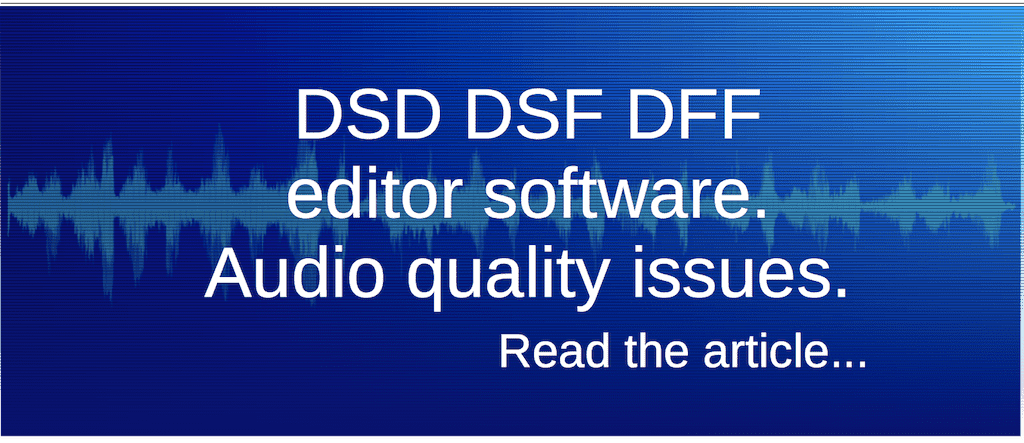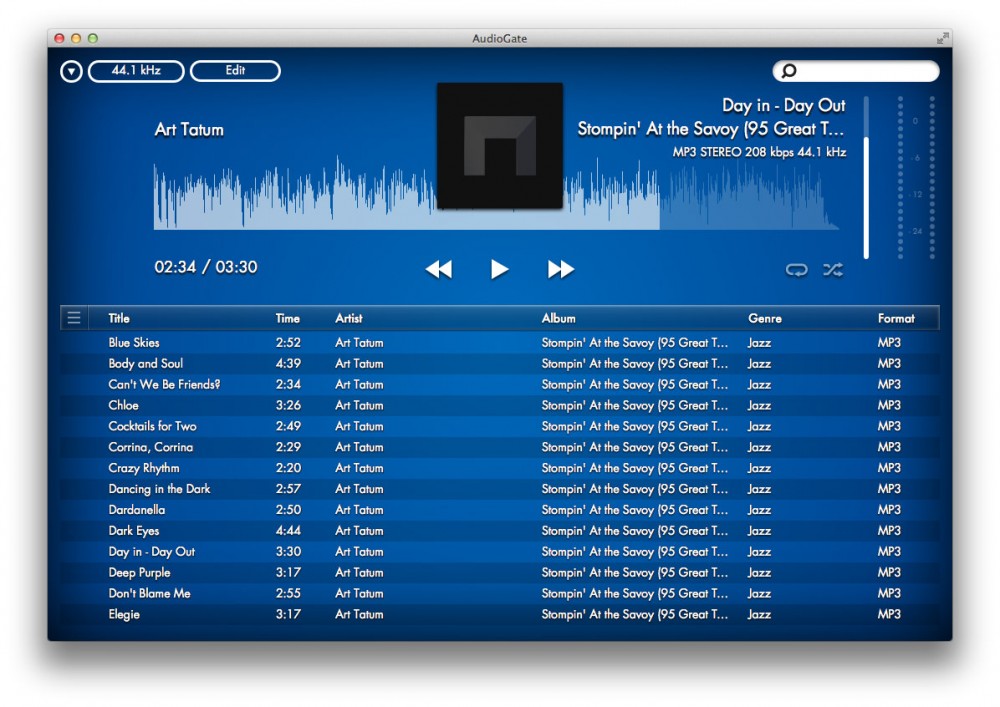RouteStar DSD software provides routing solutions with mobile apps and QuickBooks sync. By using this software, you can increase customer satisfaction and productivity by streamlining business processes with the leading route sales and delivery software. An excellent software player for Mac OS X, which ticks all the boxes is Audirvana. This is the program I personally use for my day to day listening. Audirvana can work both as a standalone player or in iTunes integrated mode if you wish.
High Resolution Music Server Software for Apple Macintosh Computers - Version 3

Colibri is a Lossless Mac Music & Audio Player for Apple Mac macOS with BS2B support for multiple headphones, 10-band EQ (Peaking Equalizer), Gapless Playback and Bit-Perfect Stereo Balance. M4A, AAC, ALAC, MP3, MIDI, MOD, TTA, DSD, WV, CUE Sheets and other popular formats. Read definitive guide by audio software developer Yuri Korzunov about:. free and commercial hi res audio player software apps on Windows, Mac, Linux, Android, iOS and other computers, laptops, mobile phones, tablets,. online for audiophiles,. Frequently Answered Questions,. what is the best music player app,. supported formats (WAV, FLAC, DSD DSF, DFF, SACD ISO, MQA, m4a. Normally Mac OSX handles DSD through DoP. Therefore your DAC has to be capable of DSD512 to do DSD256 under OSX - like for example with IFI DAC. However, ExaSound DAC uses its own special driver under OSX and it is capable of DSD256 on Mac. Which DAC do you have?
2015 - 2019 Absolute Sound Editors' Choice Award
2010 - 2019 Stereophile Editors' Choice Recommended Components
 2011 Absolute Sound Golden Ear Award
2011 Absolute Sound Golden Ear Award2011 Positive Feedback Brutus Award
2010 Stereophile Computer Audio Product of the YearRunner-up (after Channel D Pure Vinyl™)
Simply and automatically docks with iTunes
- Based on Channel D's acclaimed Pure Vinyl audio playback engine
- Pure Music handles all music playback; iTunes used as database, playlist organizer, etc.
- Automatically docks with iTunes window, including automatic UI resizing / tracking
- Native FLAC and DSD playback; Tracks appear in iTunes 2
- Supports Apple Remote App for iPad/iPhone/iPod Touch
- Automatic sample rate switching, up to 384 kHz PCM sample rate or 2.8 or 5.6 MHz DSD
- The first music server and audio playersoftware (June 2011) to directly play DSD format (dsf / dff, 64Fs and 128Fs) audio files with any DAC (real-time conversion to PCM during playback), plus full native DSD Audio Support (on DACs supporting DoP).
- Audio Streaming Support with Pure Music's 'Streamthrough' feature (included in Pure Music since 2011) which permits conveniently playing and enhancing other computer audio sources (Spotify, Qobuz, YouTube, iTunes Radio Internet audio streams, movies, etc.) through Pure Music, with full access to Pure Music's dithered volume control, 64 bit crossover, audio EQ plug-ins, NetSend streaming, metering, etc., all without needing to quit Pure Music 3
- Automatic Gapless track playback and Memory Play
- Adjustable Dithered Volume Control
- Fast-Responding Firefly Metering, Monitor Input (Native) or Output (Post - Volume Control)
- Real-Time Dynamic Range Meter
- Supports All MacOS Compatible Sound Cards / DACs / Audio Interfaces
- Supports all iTunes Compatible Audio File Formats (including WAVE, MP3, AAC, AIFF, Apple Lossless)
- Plays music stored on networked volumes
- REAL-TIME Sample Rate Conversion
- Selectable REAL-TIME 64-bit upsampling 4
- Mix to Mono, Exchange Left and Right Channels, Invert Polarity / Phase, Channel Balance Trim
- Per-Track Polarity and Volume Tagging
- CoreAudio Device HOG Mode Exclusive Access support
- Internal Audio Device Selection and Setup (or use Apple Audio MIDI Setup)
- Supports AudioUnit Audio processing plug-ins (Room Correction, Parametric EQs, etc.)
- Uncompressed local audio streaming support with NetSend (up to 384 kHz and up to four separate connections)
- 64-bit 2/3/4-way Crossover with time alignment and adjustable minimum phase (IIR) filters
- Includes Mastering Quality File Converter / Downsampler for PCM, FLAC, DSD, DXD Files
- Our own proven, optimized algorithms for sample rate and DSD to PCM conversion - not built from a patchwork of 'open source' software
- Supports both PowerPC (G4, G5) and Intel Mac Computers running Mac OS X 10.5 or later
- Can install on more than one computer per purchased license 1
- Customer Support: free email, telephone and Remote Support
Comments from Pure Music users |

jeremyzone
Member
Dsd Software For Mac Software
1. Install Xcode if you don't have it already. This is found in the Mac App store https://itunes.apple.com/us/app/xcode/id497799835?mt=12
2. Install Portaudio (PortAudio - an Open-Source Cross-Platform Audio API)
First download the Portaudio .tgz from their download page PortAudio - an Open-Source Cross-Platform Audio API The one I downloaded was 'January 30, 2014, SVN rev 1919'. Next extract the file.
Now compile the program using the instructions for Mac PortAudio: Building Portaudio for Mac OS X
(Basically all you have to do is open Terminal, change your directory to the Portaudio folder, then run './configure && make'. Check and see if 'libportaudio.dylib' is in the directory 'usr/local/lib/'. Mine wasn't there so I had to run the 'make install' command from the Portaudio folder in order to get it to work!)
3. Install Homebrew (Homebrew)
The homepage explains the simple install process. Basically 'ruby -e '$(curl -fsSL https://raw.githubusercontent.com/Homebrew/install/master/install)' '
4. Install DSD
Instructions here https://github.com/szechyjs/dsd/wiki/Installation
Dependency installation
brew install git cmake libsndfile itpp
brew install --HEAD mbelib
DSD install
git clone https://github.com/szechyjs/dsd.git # Something like: git@github.com:USERNAME/dsd.git
cd dsd # Move into source folder
[At this point, copy portaudio.h from the Portaudio folder to the DSD folder before proceeding]
mkdir build # Create build directory
cd build # Move to build directory
cmake .. # Create Makefile for current system
make # Compiles DSD
sudo make install # Installs DSD to the system
5. Run DSD
First check out which audio input and output devices are set up. Type 'DSD -a' to see all the options. Figure out which inputs and outputs you want to use. Mine is attached. Since I want to use 'Built-in Input' (aka Line In on my computer) I'll use 'pa:1' as my input and I want to use 'Built-in Output' (aka my laptop's speakers) I'll use 'pa:2' as my output. My command to start DSD with these options would end up being 'dsd -i pa:1 -o pa:2'
Well that's about all I can think of right now. Hopefully this is helpful to someone or at least saves someone a little bit of time trying to get this set up.
